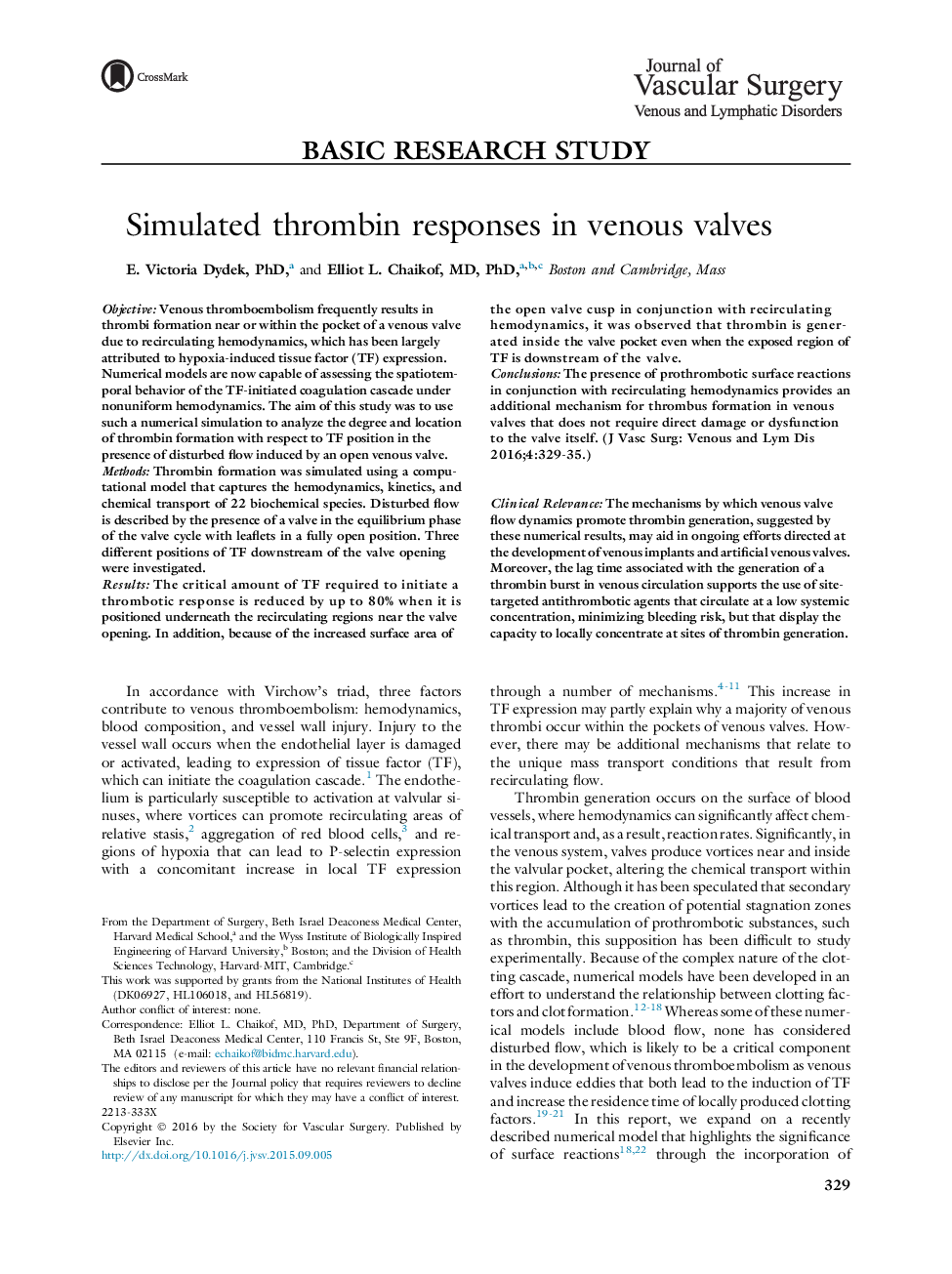| کد مقاله | کد نشریه | سال انتشار | مقاله انگلیسی | نسخه تمام متن |
|---|---|---|---|---|
| 2997971 | 1180217 | 2016 | 7 صفحه PDF | دانلود رایگان |
ObjectiveVenous thromboembolism frequently results in thrombi formation near or within the pocket of a venous valve due to recirculating hemodynamics, which has been largely attributed to hypoxia-induced tissue factor (TF) expression. Numerical models are now capable of assessing the spatiotemporal behavior of the TF-initiated coagulation cascade under nonuniform hemodynamics. The aim of this study was to use such a numerical simulation to analyze the degree and location of thrombin formation with respect to TF position in the presence of disturbed flow induced by an open venous valve.MethodsThrombin formation was simulated using a computational model that captures the hemodynamics, kinetics, and chemical transport of 22 biochemical species. Disturbed flow is described by the presence of a valve in the equilibrium phase of the valve cycle with leaflets in a fully open position. Three different positions of TF downstream of the valve opening were investigated.ResultsThe critical amount of TF required to initiate a thrombotic response is reduced by up to 80% when it is positioned underneath the recirculating regions near the valve opening. In addition, because of the increased surface area of the open valve cusp in conjunction with recirculating hemodynamics, it was observed that thrombin is generated inside the valve pocket even when the exposed region of TF is downstream of the valve.ConclusionsThe presence of prothrombotic surface reactions in conjunction with recirculating hemodynamics provides an additional mechanism for thrombus formation in venous valves that does not require direct damage or dysfunction to the valve itself.
Clinical RelevanceThe mechanisms by which venous valve flow dynamics promote thrombin generation, suggested by these numerical results, may aid in ongoing efforts directed at the development of venous implants and artificial venous valves. Moreover, the lag time associated with the generation of a thrombin burst in venous circulation supports the use of site-targeted antithrombotic agents that circulate at a low systemic concentration, minimizing bleeding risk, but that display the capacity to locally concentrate at sites of thrombin generation.
Journal: Journal of Vascular Surgery: Venous and Lymphatic Disorders - Volume 4, Issue 3, July 2016, Pages 329–335
